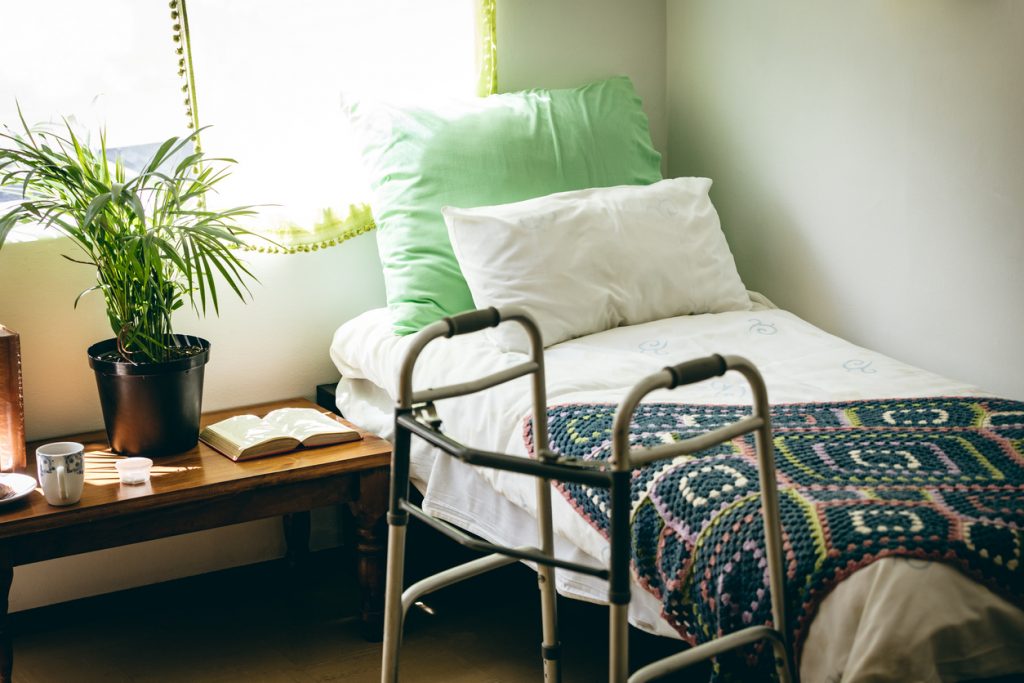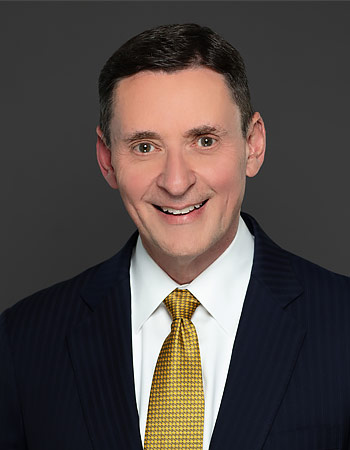
Recent statistics show that roughly 50 percent of US nursing home residents fall each year, and most of these incidents result in broken and fractured bones. Further, older people with bone fractures have a higher risk of death, as these injuries often bring about a much more comprehensive range of health issues. With prolonged bed rest and loss of mobility comes an increased risk of thromboembolic disease, infection, pneumonia, and the worsening of underlying conditions.
When assisted living facilities are understaffed or fail to follow proper standards of care, residents are more prone to suffering needless and potentially life-altering injuries. The law affords remedies if you believe your loved one’s broken bones were caused by negligent staff or procedures.
For experienced legal counsel from Dallas nursing home abuse lawyers, reach out to Crowe Arnold & Majors, LLP today. We offer free initial consultations and provide results-focused representation without upfront legal fees.
No Fee Unless We Win!
How We Can Help
While injuries to senior residents may be purely accidental, there are other times when gross negligence, understaffing, and caregiver abuse may be to blame. So, when a loved one is suffering, our Dallas nursing home fracture & broken bone lawyers will investigate the circumstances and fight tirelessly to secure rightful compensation for victims and their families.
Our dedicated nursing home injury attorneys handle these sensitive cases on a contingency fee basis and have the resources to prove whether neglect or intentional abuse occurred. If a relative or loved one has suffered a fracture and answers aren’t forthcoming, it’s in your best interest to consult with our law firm as soon as possible.
Consider that more than 30 percent of nursing homes in the country have been cited for regulatory infractions, abuse, and elder neglect. The doctors, administrators, and caregivers in these facilities are responsible for ensuring the care and safety of their residents. When this is absent, victims–and their families–have the right to sue for monetary compensation.
For more than six decades, the legal team at Crowe Arnold & Majors has been bringing negligent parties to justice, helping families in North Texas achieve fair compensation for the suffering caused by nursing home slip and fall accidents.
Jury verdict after trial involving allegations of nursing home abuse and neglect, in which victim suffered sepsis and severe malnutrition and dehydration. (Oklahoma)
Settlement involving nursing home fall.
Settlement involving nursing home bed sore and infection death.
Systemic Failures That Lead to Fracture Injuries in a Nursing Home
Elderly individuals are at elevated risk of fractures due to physiological vulnerability, including osteoporosis, poor balance, and frailty. However, this risk is precisely why nursing homes must implement heightened fall prevention and mobility protocols.
Facilities are required by both federal and state regulations to assess fall risk upon admission and at regular intervals, then develop and implement individualized care plans accordingly.
Systemic failures include:
- Inadequate supervision of high-risk residents
- Failure to follow physician-ordered mobility assistance protocols
- Understaffing, leading to delayed response times and unsafe transfers
- Environmental hazards such as wet floors, lack of grab bars, or poor lighting
- Physical abuse or mishandling by staff or other residents
These are not isolated oversights; they are often symptoms of operational negligenc
We’ll Fight for the Full Settlement You Deserve!
Tap Here to Call Our Law Office.
Types of Fractures That Often Indicate Negligence or Abuse
The mechanism of injury can reveal a great deal about whether negligence played a role. Specific fracture patterns are strongly associated with lapses in care, including the following:
Hip Fractures
Hip fractures are frequently linked to unassisted falls and are often preventable when appropriate supervision and mobility assistance protocols are in place. Their occurrence may raise concerns about potential negligence, particularly if the resident was not wearing suitable footwear or in an area lacking required fall-prevention measures such as handrails, non-slip flooring, or bed alarms.
In such cases, failing to implement or adhere to fall-risk protocols may constitute a breach of the facility’s duty of care.
Wrist, Arm, or Shoulder Fractures
Fractures to the wrist, arm, or shoulder may indicate abrupt or improper handling. These injuries can occur when staff attempt to prevent falls by forcefully grabbing a limb or during hurried or unsafe transfers. Such actions may result in torsional injuries or spiral fractures that are not consistent with standard care practices.
When these types of fractures occur without a clear, documented incident or explanation, they may suggest potential neglect or abuse and warrant immediate investigation.
Spinal Compression Fractures
These injuries typically result from a high-impact fall or an abrupt, unsupported seated collapse. They may also occur due to improper handling by staff or from an unwitnessed fall, such as from a bed or wheelchair. In residents with cognitive impairments, symptoms may go unreported or unnoticed, increasing the risk that the fracture is initially overlooked and diagnosed only after a delay, potentially worsening the injury.
Skull or Facial Fractures
Skull and facial fractures are uncommon in typical, low-impact falls and may indicate significant trauma. In the context of elder care, such injuries can suggest potential physical abuse, neglect, or an unreported high-impact incident. These injuries warrant immediate medical evaluation.
Pelvic Fractures
While pelvic fractures may result from falls, they can also occur due to improper lifting techniques or negligent transfers by facility staff. These injuries can severely impair a resident’s mobility, cause substantial pain, and prolong recovery.
When not consistent with documented incidents or care standards, pelvic fractures may indicate potential neglect.
Multiple or Healing Fractures
The presence of several fractures at different stages of healing can be a clear warning sign of repeated trauma, suggesting ongoing neglect or abuse rather than isolated incidents.
Further Complications of Broken Bones
When caring for an older adult with a broken bone or fracture, the most pressing concerns are thromboembolism and pain management. Studies indicate that more than 40 percent of elderly patients with hip fractures develop deep vein thromboembolism (DVT).
This dangerous blood clot usually forms in the deep veins of the leg or pelvis, which may break off and travel to the lungs, causing a pulmonary embolism (PE). Pulmonary embolisms are life-threatening–these blood clots can cause hypertension, heart failure, and sudden death.
According to research published in The Journal of Clinical Endocrinology & Metabolism, bone fractures can increase the risk of death for the elderly for up to 10 years after the accident. This is because broken bones serve as a catalyst for a series of debilitating health complications.
Time-Sensitive Intervention Can Significantly Impact Prognosis
When a fracture occurs, how the nursing home responds is important. Time-sensitive medical intervention can significantly impact prognosis. Delays in care can exacerbate the injury, increase the likelihood of surgical intervention, and diminish recovery potential, particularly in elderly patients whose resilience is already compromised.
Under federal and Texas law, nursing facilities are required to:
- Conduct an Immediate Clinical Assessment: Evaluate the resident’s condition promptly to determine the severity of the injury or health event.
- Notify the Physician and Legal Representative: Inform the resident’s attending physician and the family member or legal representative without unreasonable delay,
- Arrange for Emergency Medical Transport When Necessary: Ensure the resident is transferred to an emergency care facility when the situation requires urgent medical intervention.
- Document the Incident and Medical Response: Maintain detailed, contemporaneous records of the incident, assessments, communications, and care provided.
These steps are not discretionary; they are codified obligations under state and federal law intended to ensure continuity of care and transparency.
What Constitutes a Breach of Care?
Older adults face unique vulnerabilities. Their recovery window is narrow, and the risk of cascading complications: pressure ulcers, infections, loss of mobility, cognitive deterioration, and even premature death, is far higher than in younger populations. Even a delay of several hours before ordering diagnostic imaging or initiating hospital transfer may constitute a breach of care.
At Crowe Arnold & Majors, we evaluate these timelines carefully, seeking inconsistencies between the official record and what medical charts, transfer logs, or hospital reports reveal.
How Families Can Identify Signs of Neglect
While not every fracture is the result of abuse or neglect, certain patterns should prompt further scrutiny and potentially legal action.
Often, families are given vague or conflicting explanations. Staff may be evasive or unable to account for how an injury occurred. When there are multiple versions of the story or silence, this lack of transparency can indicate deeper issues in documentation, communication, or supervision.
Additional warning signs include:
- A history of unexplained bruises, falls, or prior injuries
- Frequent hospital transfers without documented care plan adjustments
- Staff explanations that sound overly rehearsed or inconsistent with the resident’s condition
- Missing or delayed incident reports, chart entries, or discrepancies between facility and hospital records
- Inaccessible or mysteriously absent camera footage
Nursing homes are legally obligated to maintain timely, complete, and accurate records under both federal and Texas regulations. When documentation is missing, inconsistent, or appears altered, it may indicate noncompliance with regulatory standards and warrants further examination to determine whether proper care and reporting protocols were followed.
What to Do If You Suspect Nursing Home Negligence
If your loved one suffered a fracture in a nursing home, take these steps:
Step 1: Speak with a Nursing Home Negligence Attorney About Your Concerns
Before contacting staff, filing formal complaints, or requesting records, consult an experienced nursing home negligence attorney. Legal counsel can help assess whether your concerns meet the legal standard for a claim under Texas law, such as negligence, abuse, or wrongful death.
Early legal involvement is critical to ensure that essential evidence, such as internal reports, surveillance footage, and medical documentation, is preserved and protected from alteration, destruction, or loss. Attorneys can also advise on how to proceed without compromising the integrity of a potential case.
Step 2: Document the Injury and Conditions
Promptly take clear, dated photographs of your loved one’s injuries to create a visual record. If environmental factors may have contributed, such as wet floors, inadequate lighting, or absent safety equipment, photograph those conditions as well.
Record all relevant details, including statements made by staff regarding the incident, and document the names and roles of every individual involved or interviewed.
Thorough documentation is critical for establishing the circumstances of the injury and may serve as key evidence in any legal or regulatory proceedings.
Step 3: Request Critical Records
If your loved one is your legal dependent or you hold medical power of attorney, you are entitled under both Texas law and federal regulations to access their medical records and related documentation.
This includes incident reports, care plans, nursing notes, and any available surveillance footage. If the facility is vague, evasive, or refuses access, it may signal noncompliance or raise further concerns. An attorney can assist in obtaining these records through the appropriate legal channels, including formal requests or subpoenas when necessary.
Step 4: Consider Filing a Formal Complaint
Submitting a complaint to Texas Health and Human Services can initiate a regulatory investigation and may result in citations, fines, or corrective actions against the facility.
However, the timing of the complaint is critical. In many cases, it is advisable to consult with a Dallas nursing home abuse lawyer beforehand to avoid alerting the facility prematurely, which could lead to the alteration or destruction of key evidence.
When filed strategically, a formal complaint can support your legal claim and emphasize the need for independent oversight and accountability.
Pursue a Claim for Negligence
If the facts and evidence warrant legal action, your attorney will advise you on pursuing a claim for negligence, abuse, or wrongful death under applicable Texas law. This process may involve retaining qualified medical and forensic experts, quantifying economic and non-economic damages, and initiating legal proceedings against the facility to seek full compensation.
Legal counsel will ensure that your case complies with procedural requirements and is positioned to hold the responsible parties accountable.
Potential Compensation
If your loved one’s injury was caused by a nursing home’s negligence, Texas law allows families to pursue compensation through a legal claim or lawsuit. Damages are intended to address the full scope of harm resulting from the injury, which may include:
- Medical Expenses: Reimbursement for emergency treatment, hospital stays, surgeries, diagnostic imaging, medications, rehabilitation, and any ongoing medical care directly related to the injury.
- Increased Care Requirements: Compensation for additional nursing care, physical or occupational therapy, and modifications to living arrangements made necessary by a loss of mobility or independence.
- Pain and Suffering: Recovery for physical pain, emotional distress, mental anguish, and diminished quality of life resulting from the injury.
- Long-Term Effects: Damages for ongoing or permanent health consequences, including complications or deterioration linked to the original injury.
- Loss of Autonomy: Compensation for the loss of the ability to perform daily activities and the resulting dependence on caregivers.
- Wrongful Death: In cases where the injury leads to death, surviving family members may seek damages for funeral expenses, loss of companionship, and the decedent’s pain and suffering, as well as loss of financial contributions, when applicable.
Our goal is to help you pursue maximum recovery allowed under Texas law, ensuring your loved one’s suffering and losses are acknowledged and addressed through the legal process.
Schedule a Free Consultation with Crowe Arnold & Majors, LLP
If your loved one suffered a fracture while in the care of a nursing home, you or your family member may be entitled to compensation. Schedule a free, no-obligation consultation. We accept nursing home injury and fracture cases on a contingency fee, meaning you pay no legal fees unless we secure compensation.

John W. Arnold,
Partner, Trial and Appellate Attorney
With over 25 years of experience, John is a seasoned trial and appellate attorney known for delivering results.

David W. Crowe
Partner, Personal Injury
For more than 30 years, David has been a powerful advocate and fighting for individuals harmed by negligence and abuse.

D.G. Majors
Trial Attorney, Personal Injury and Product Liability
D.G. is a trial lawyer with a strong track record of results in personal injury, product liability, and commercial litigation.
Our Dallas Location
6550 Bank of America Plaza
901 Main St.
P: 214-231-0555





